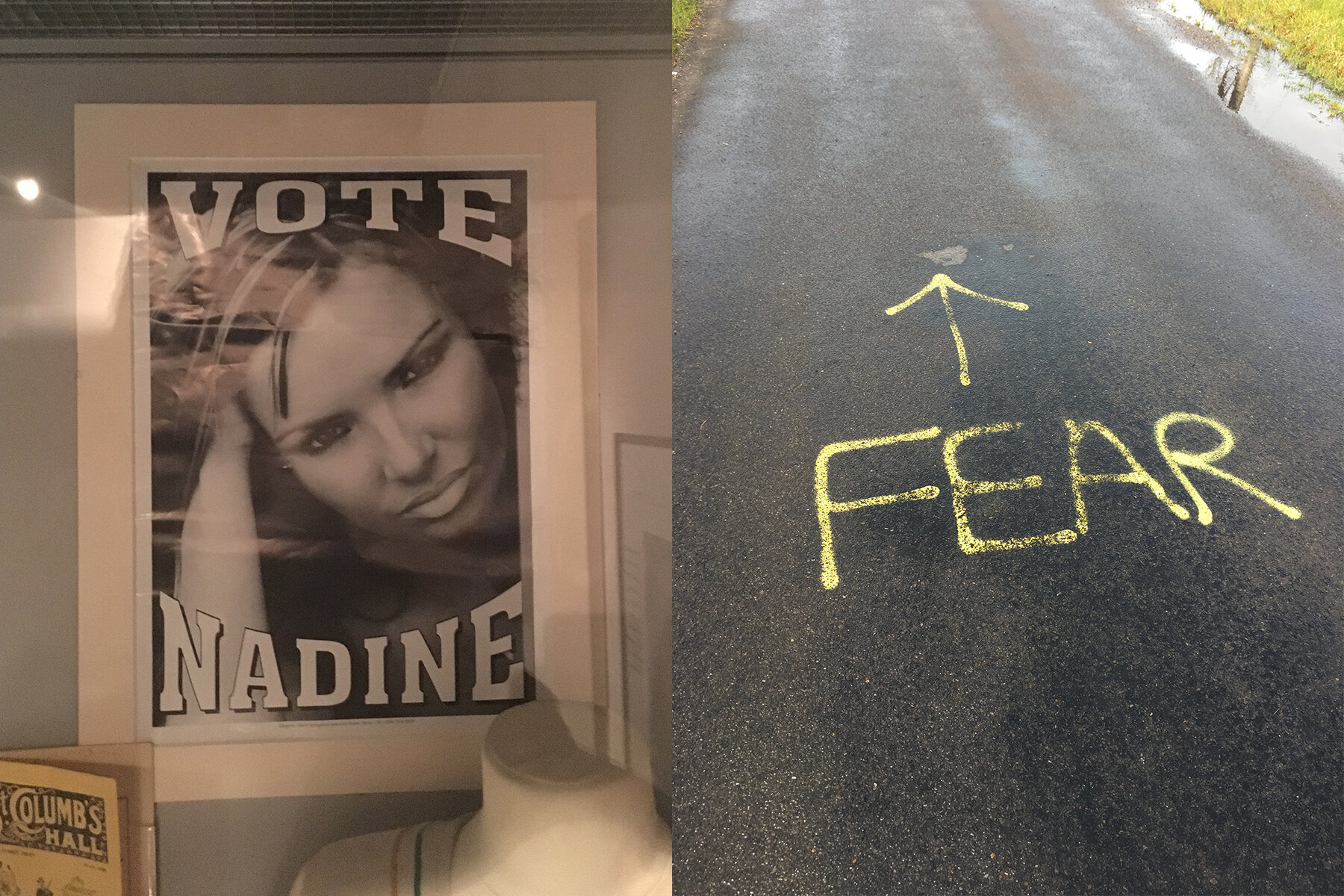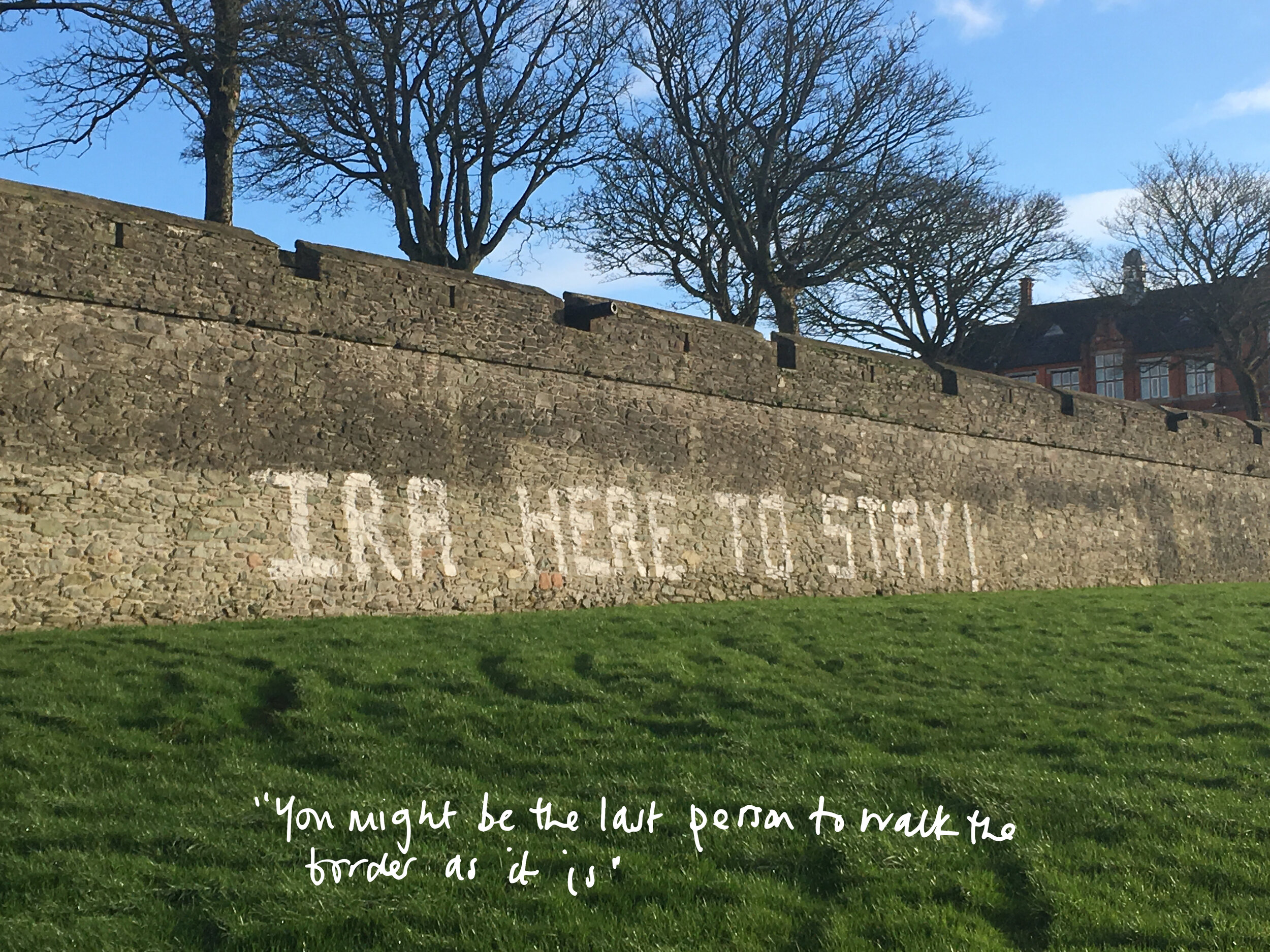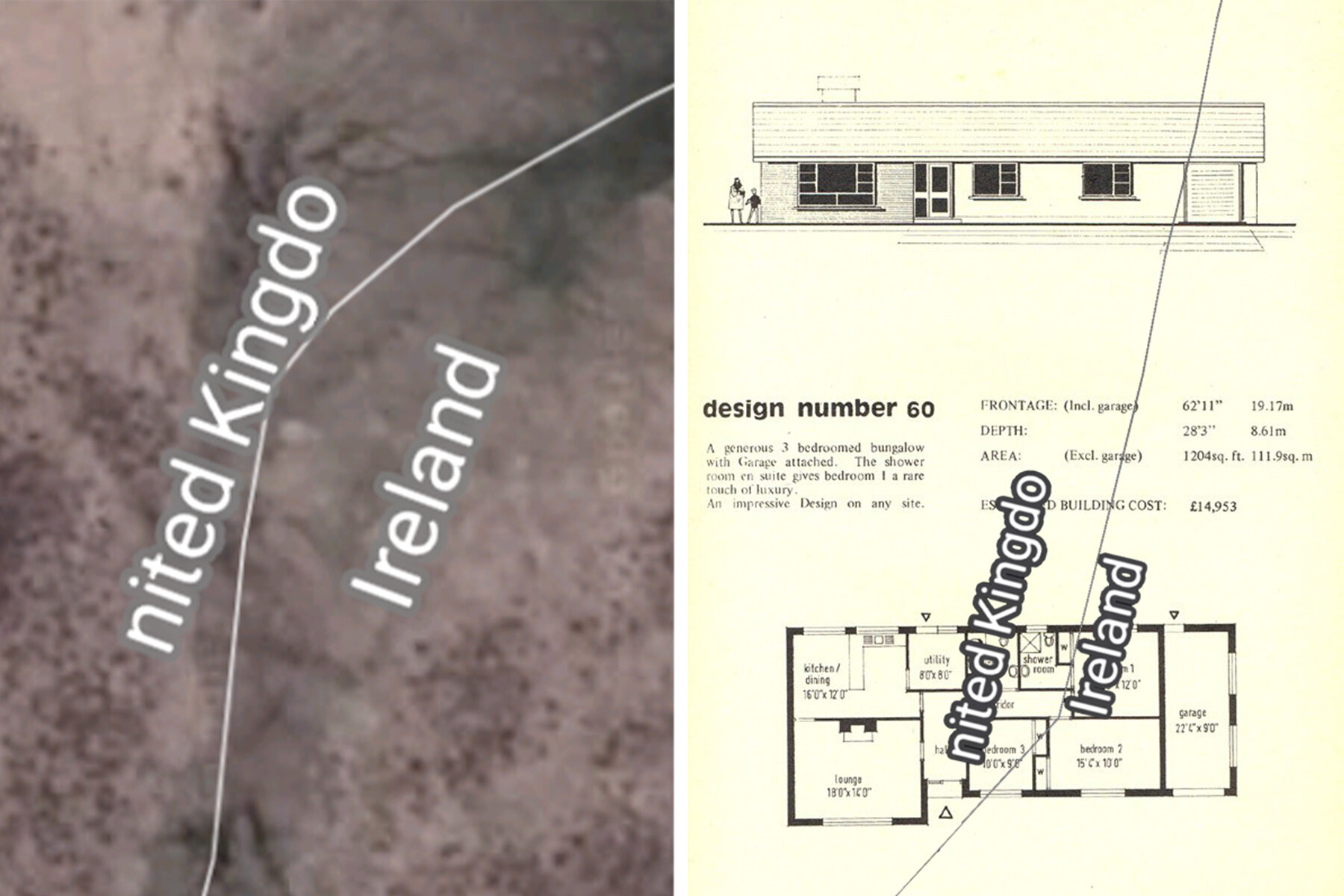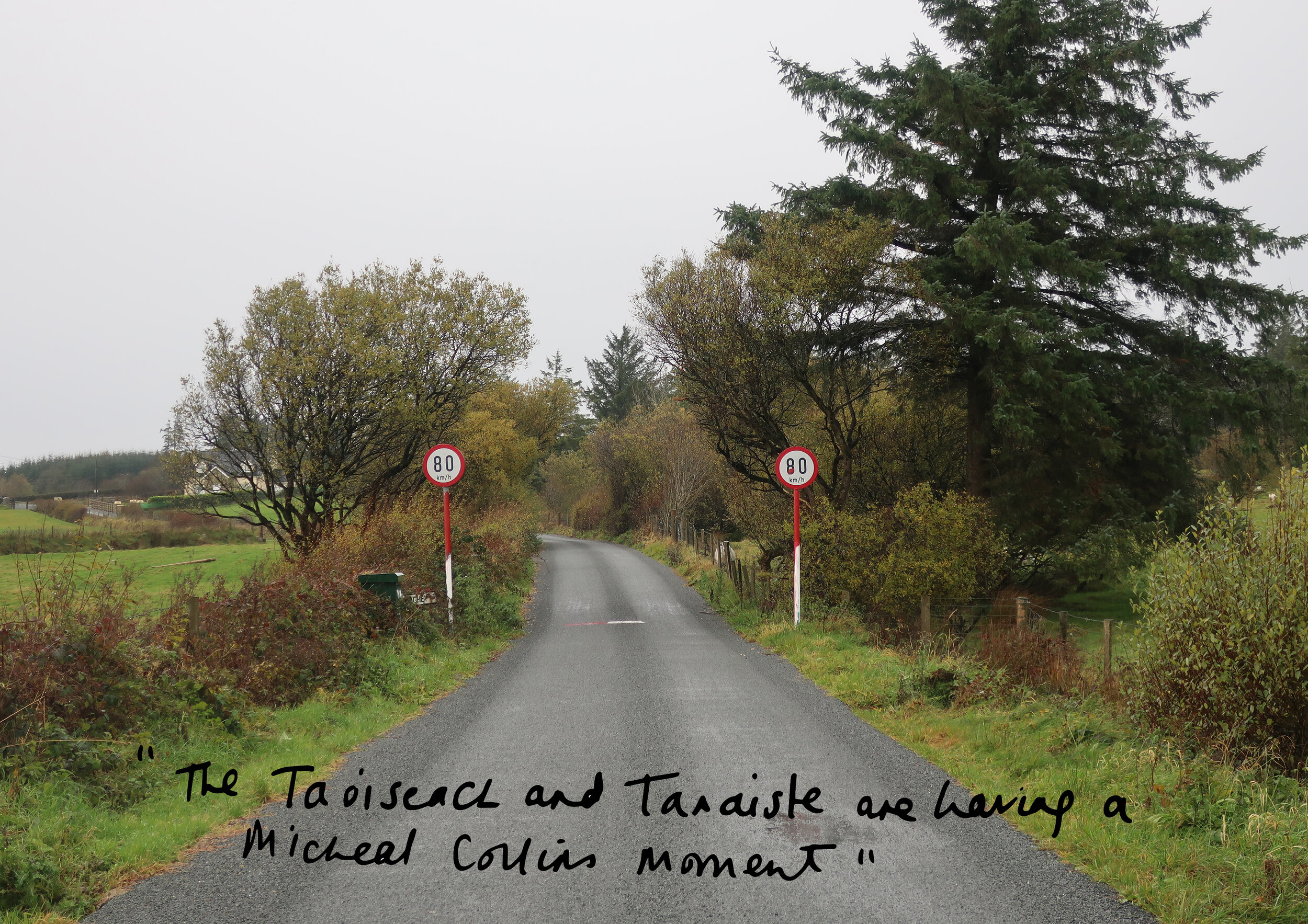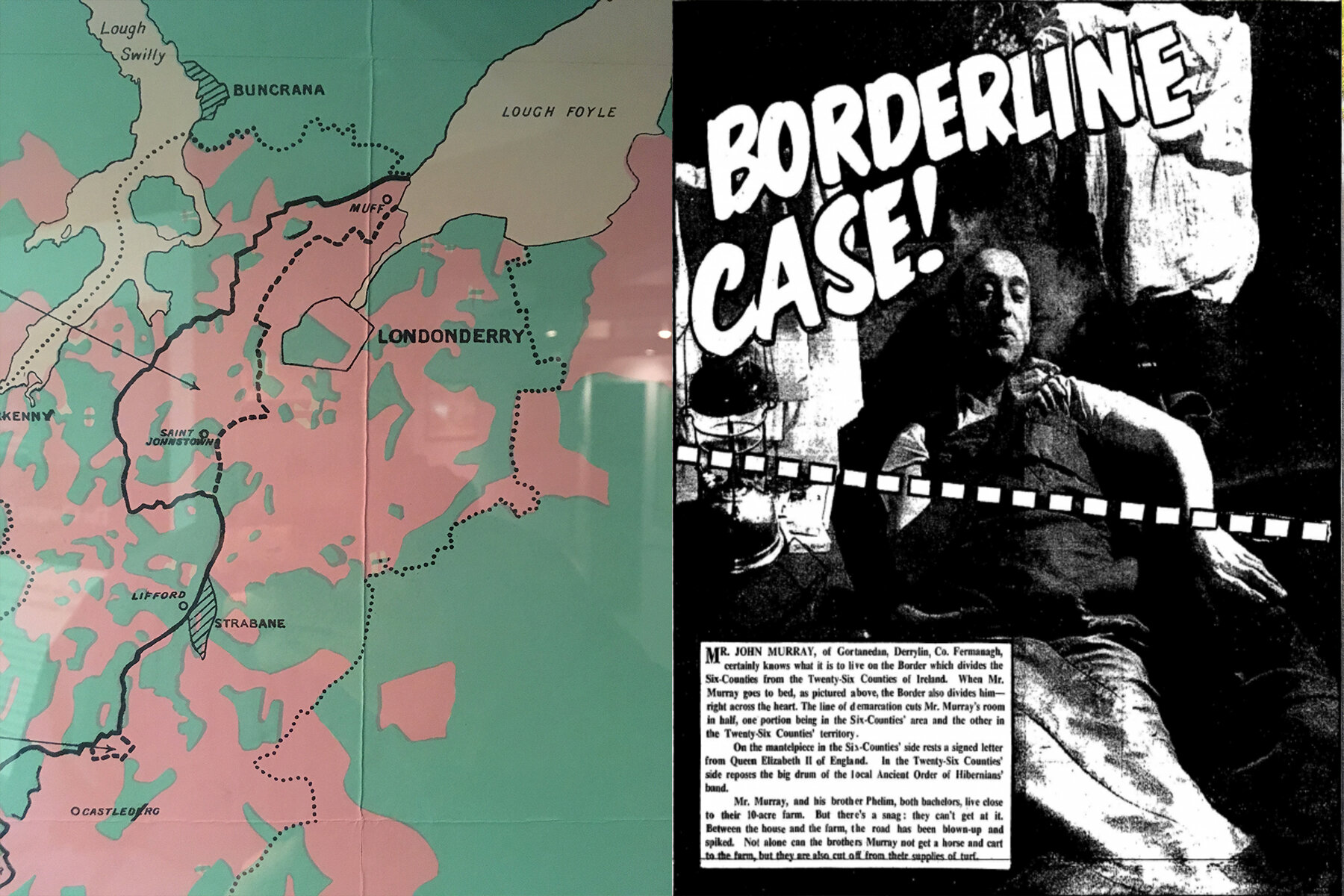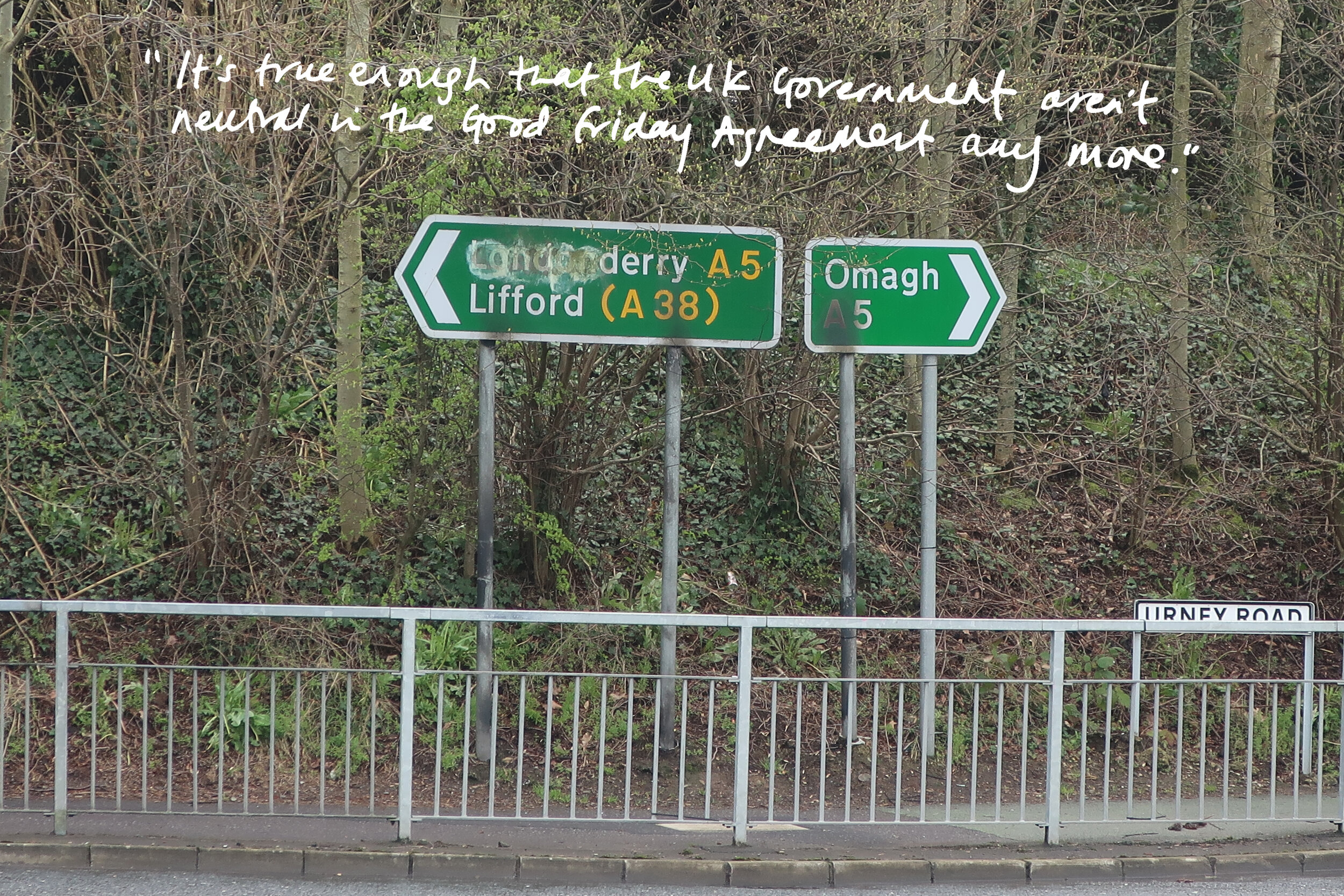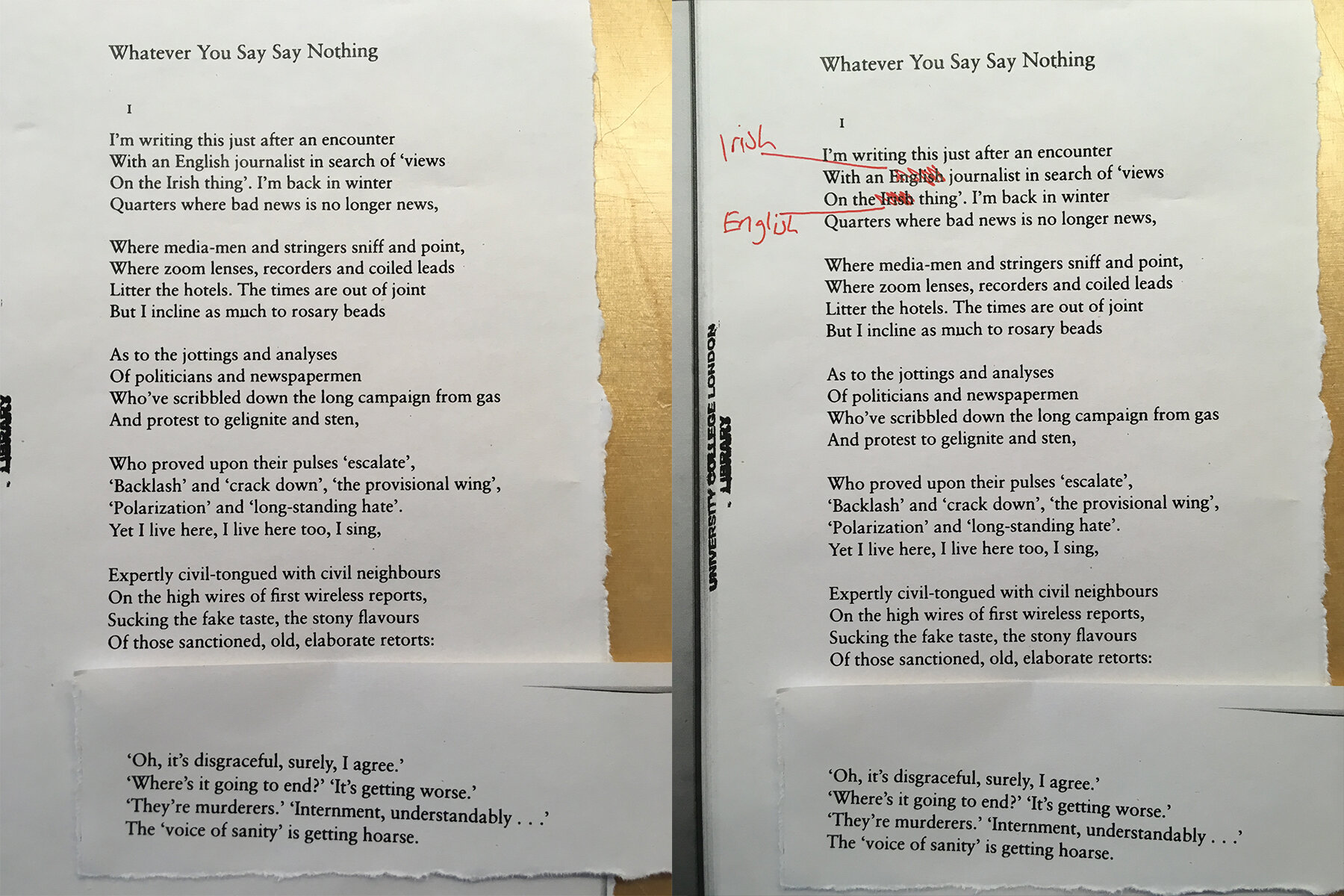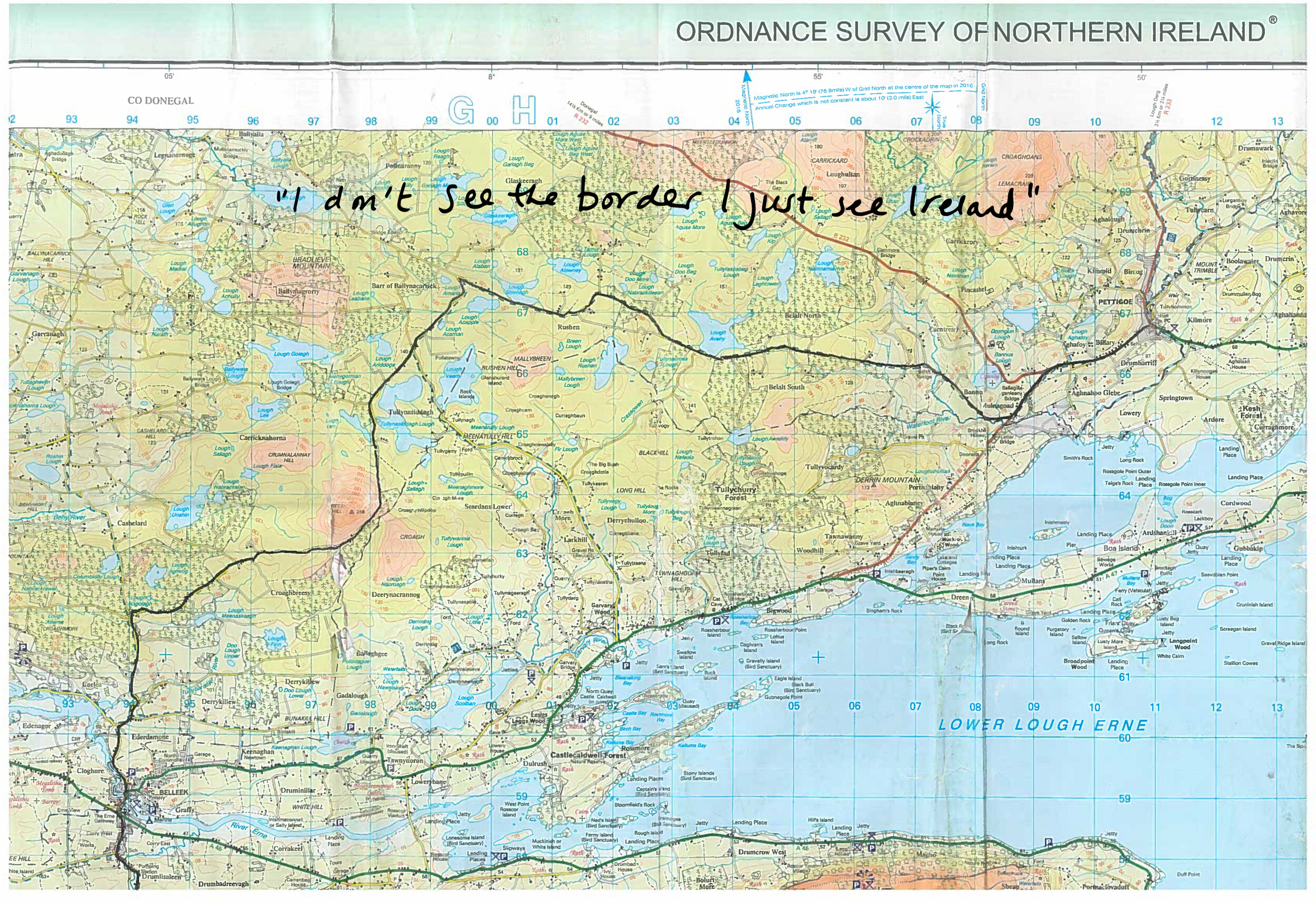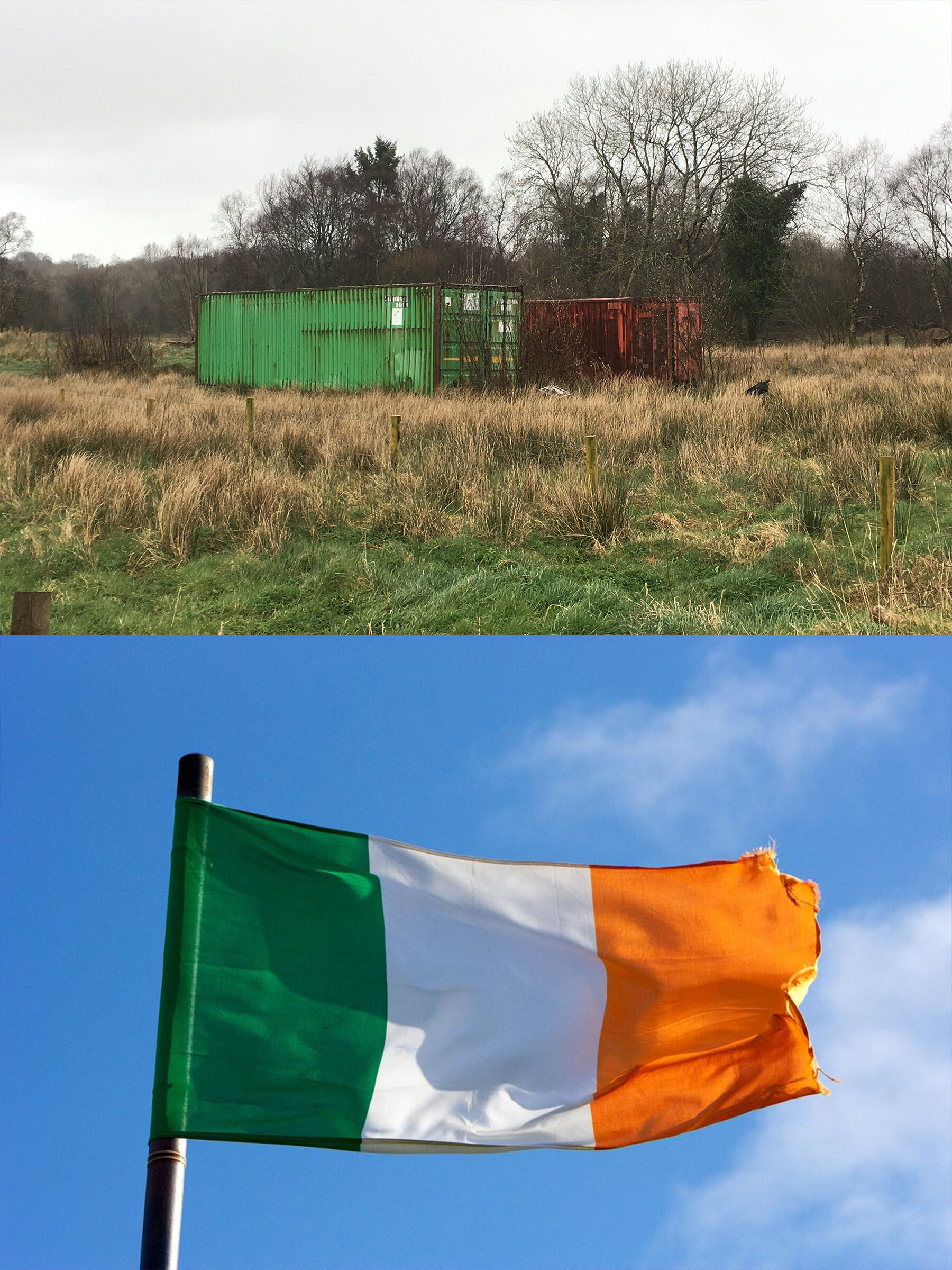Alternative Arrangements (PhD overview)
Alternative Arrangements: A Topography Along & Across the Irish Borderlands (2016-2021)
The contested border on the island of Ireland runs 500 kilometres/310 miles from Lough Foyle to the Irish Sea, and has divided the six counties in the North from what is now the Republic since 1921. Its sinuous route stems from 17th-century county boundaries, the irregularities of which are heightened due to the unique relationship between architecture, history, geography, and politics in these islands.
This research produces an alternative reading of the borderlands as the centenary of Partition approaches and the UK leaves the European Union. It aims to draw out contested histories via a concept of ‘alternative arrangement’ that unfixes historical and material ‘fragments’ (Benjamin, 1940), and resituates them through kinetic ideas of ‘assemblage’ and ‘deterritorialisation’ (Deleuze & Guattari, 1987). This concept of ‘alternative arrangement’ stems from the Brady Amendment of the UK-EU Withdrawal Agreement for an alternative to the so-called Irish backstop.
Here the emphasis is shifted, from ‘alternative arrangements’ for goods and services to ‘alternative arrangements’ of ‘sites’ and ‘non-sites’ (Smithson, 1968). It does this to understand the characteristics of and relationships between architectures, landscapes, histories and geographies of the borderlands; asking how they have influenced the border, and in turn how they may have been shaped by the border in the first place.
This is underpinned by a topographic practice of practice-led research and design projects, consisting of: journeys, mapping, photography, publishing, site-specific writing, public lectures and installations. This topographic practice is twofold: interested in both the research of a given territory and the territory of the research itself. It documents sites of the borderlands but also understands this process of documentation as a site of research, and an additional form of ‘alternative arrangement’. It studies the features of a place and goes beyond, asking how research methods, practices and outcomes can also be site-specific as a form of ‘critical spatial practice’ (Rendell, 2003).
Three journeys move through the borderlands: a drive across; a walk along; and an itinerant ‘Hedge School’ travelling between sites of six lectures and sites of six ‘alternative arrangements’. These journeys take the research beyond the archive and the academy, moving along and across the borderlands alone and with others, and breaking down the boundaries between the historian, viewer, and the historical object.
This thesis explores the spatial qualities of writing about place in a ‘polyphonic’ approach (Alexievich, 2013), one that is in constant motion corresponding to the shifting geographies and histories of the borderlands – both official and unofficial – as well as the everyday practices around them. It moves not only along and across the border but into it, beginning with the border in sight but ending with it disappearing entirely.
Alternative Arrangements covers the overarching research that forms my PhD at the Bartlett School of Architecture, UCL, supervised by Professors Jane Rendell and Barbara Penner, and funded by the London Arts & Humanities Partnership.

